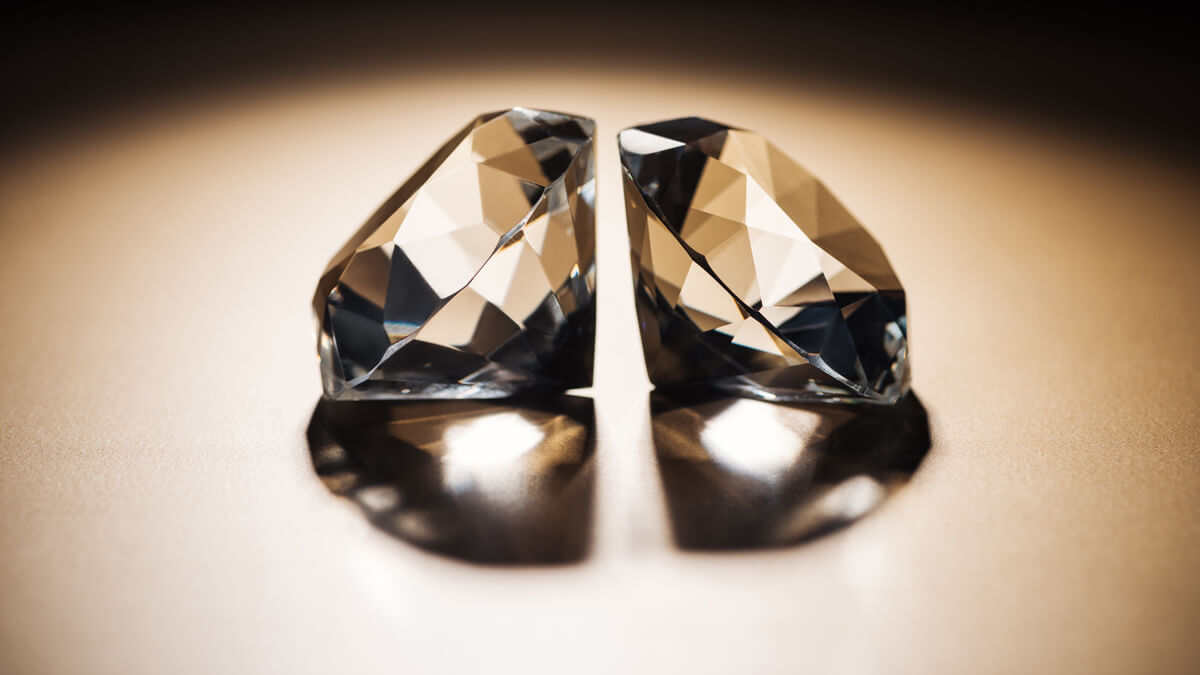Introduction to Lab Diamonds
The Basics of Lab Diamonds
Lab diamonds, also known as synthetic or cultured diamonds, are gems that are grown in laboratories using advanced technological processes. Unlike natural diamonds, which form over billions of years under extreme pressure and temperature deep within the Earth’s mantle, lab diamonds are the future are created in a fraction of the time. Despite this, they are chemically, physically, and optically identical to natural diamonds.
How Lab Diamonds are Created
Lab diamonds are produced through two primary methods: High Pressure High Temperature (HPHT) and Chemical Vapor Deposition (CVD). The HPHT method simulates the natural conditions of diamond formation by applying high pressure and temperature to carbon. On the other hand, the CVD method involves a gas mixture that deposits carbon atoms onto a substrate, which then crystallize into diamond. Both methods produce diamonds of exceptional quality, but they differ in their processes and specific characteristics.
Benefits of Lab Diamonds
Environmental Impact
One of the most compelling benefits of lab diamonds is their minimal environmental impact. Traditional diamond mining is notorious for its ecological footprint, including habitat destruction, soil erosion, and water pollution. In contrast, lab diamonds are created with a fraction of the environmental disturbance, making them a more sustainable choice.
Ethical Considerations
Ethical concerns are another driving force behind the rise of lab diamonds. The diamond industry has long been plagued by issues such as child labor, unsafe working conditions, and conflict financing. Lab diamonds, however, are produced in controlled environments where ethical practices can be ensured, offering a guilt-free alternative for conscientious consumers.
Cost Comparison with Natural Diamonds
Lab diamonds are generally more affordable than their natural counterparts. The reasons for this are twofold: the reduced costs associated with production and the lack of market-driven inflation. As a result, you can often find lab diamonds at a fraction of the cost of natural diamonds of similar size and quality, allowing for larger or higher-quality stones within the same budget.
The Science Behind Lab Diamonds
Understanding the Growth Process
The growth process for lab diamonds involves creating conditions that mimic those found in the Earth’s mantle. HPHT diamonds are grown by recreating the extreme pressure and temperature conditions, while CVD diamonds are formed through a gaseous carbon environment. Both methods yield diamonds with the same physical properties as natural diamonds, such as hardness and brilliance.
Comparison with Natural Diamond Formation
While lab diamonds and natural diamonds share the same fundamental properties, their origins are quite different. Natural diamonds are formed over billions of years under the Earth’s surface, while lab diamonds are created in weeks or months. Despite this difference in timescales, both types of diamonds are composed of the same carbon atoms arranged in a crystal lattice, resulting in identical appearance and quality.
Lab Diamonds vs. Natural Diamonds
Appearance and Quality
When it comes to appearance, lab diamonds and natural diamonds are virtually indistinguishable. Both types of diamonds are graded using the same criteria: the Four Cs—carat weight, cut, color, and clarity. The only differences you might notice are in the diamond’s inclusions, which can sometimes reveal whether it’s a natural or lab-grown gem, though this requires specialized equipment to detect.
Value and Resale
In terms of value, lab diamonds are generally less expensive than natural diamonds. However, the resale value of lab diamonds can be a bit more complex. While they may not hold their value as well as natural diamonds, their affordability and growing popularity are likely to impact their market value positively over time.
Market Trends and Consumer Preferences
Increasing Popularity of Lab Diamonds
Lab diamonds are gaining traction as consumers become more aware of their benefits. The rising demand for ethical and sustainable products is driving more people to choose lab diamonds over natural ones. This shift is reflected in market trends, with lab diamonds becoming a popular choice for engagement rings, earrings, and other fine jewelry.
Consumer Perceptions and Misconceptions
Despite their advantages, lab diamonds are sometimes misunderstood. Some consumers mistakenly believe that lab diamonds are of inferior quality or less valuable than natural diamonds. However, lab diamonds offer the same quality and brilliance as natural diamonds, with the added benefits of lower cost and ethical assurance.
The Future of Lab Diamonds
Innovations in Lab Diamond Technology
The technology behind lab diamonds is continually evolving. Innovations in both HPHT and CVD methods are making it possible to create diamonds that are larger and more flawless. Advances in these technologies could lead to even more affordable and high-quality lab diamonds in the future, making them accessible to a broader audience.
Potential Market Growth and Predictions
The market for lab diamonds is expected to grow significantly in the coming years. As more consumers seek out ethical and sustainable options, the demand for lab created diamonds is likely to rise. Industry experts predict that lab diamonds will become a major player in the jewelry market, with continued advancements in technology and growing consumer acceptance driving their popularity.
Practical Considerations When Buying Lab Diamonds
How to Choose a Lab Diamond
When choosing a lab diamond, it’s important to consider the same factors as you would for a natural diamond: the Four Cs. Additionally, you should ensure that the diamond comes with a certification from a reputable gemological laboratory, which verifies its authenticity and quality.
Where to Buy Lab Diamonds
Lab diamonds can be purchased from a variety of sources, including specialized online retailers, jewelry stores, and direct from manufacturers. When buying lab diamonds, it’s crucial to choose a reputable seller who provides clear information about the diamond’s origin, quality, and certification.
Conclusion
Summary of Key Points
Lab diamonds represent a significant shift in the jewelry industry, offering a sustainable, ethical, and cost-effective alternative to natural diamonds. With their growing popularity and the advancements in technology, lab diamonds are poised to become the future of fine jewelry. Their environmental benefits, ethical production, and affordability make them an attractive choice for modern consumers.
Final Thoughts on the Future of Lab Diamonds
As we look ahead, lab diamonds are set to play a crucial role in the evolution of the jewelry market. Their continued growth and innovation will likely redefine what it means to own a diamond, offering a brighter, more ethical future for both consumers and the planet. So, if you’re considering a new piece of jewelry, a lab diamond might just be the perfect choice to embrace the future of gems.

